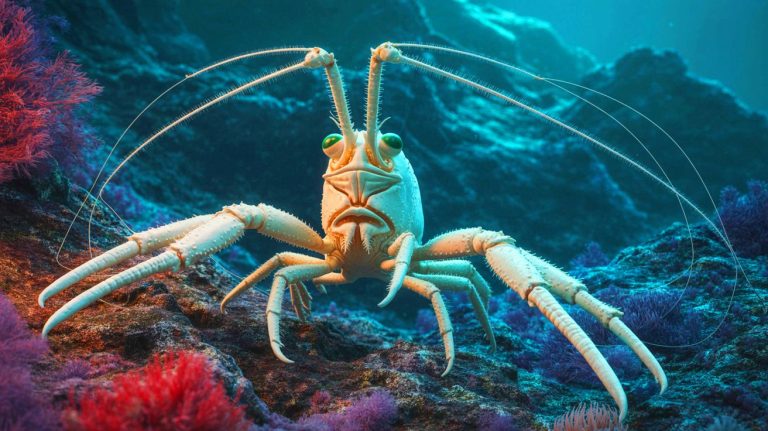| IN A NUTSHELL |
|
In the depths of our planet’s oceans, hidden secrets await discovery. As humanity turns its gaze toward the stars, with missions like NASA’s Europa Clipper probing the icy moons of Jupiter for signs of life, our own deep-sea environments continue to surprise and fascinate scientists. The recent discovery of a new crustacean species in the Atacama Trench, an abyssal region off the coast of Peru and Chile, underscores the vast, untapped potential of Earth’s unexplored frontiers. This article delves into the significance of this discovery and its implications for both marine biology and our understanding of life in extreme environments.
The Mysterious Atacama Trench
The Atacama Trench, also known as the Peru-Chile Trench, is an enigmatic part of our planet’s geography. Stretching approximately 3,700 miles along the coast of South America, this trench delves into the deepest parts of the ocean, reaching depths of nearly 25,246 feet. This region is classified as the Hadal zone, a realm of perpetual darkness and extreme pressures.
Scientists have long been captivated by the mysteries of the Hadal zone. Despite the challenges posed by the immense pressures and lack of light, these regions are believed to be ecological havens. The Atacama Trench, in particular, has become a focal point for marine research. Recent expeditions by the Instituto Milenio de Oceanografía, aboard the research vessel Abate Molina, have yielded exciting discoveries.
i>The Atacama Trench is not just a geographical feature; it is a gateway to a world of untapped biological diversity. The recent findings highlight the importance of continued exploration in this remote region.
Discovering a New Predator
Amidst the darkness of the Hadal zone, a new predator has emerged with a name as enigmatic as its habitat: Dulcibella camanchaca. This crustacean, only about four centimeters long, was discovered nearly 8,000 meters below sea level, showcasing the astonishing adaptability of life in extreme conditions. Its white carapace and unique morphology lend it an otherworldly appearance, reminiscent of the infamous Facehugger from the Alien franchise.
What makes D. camanchaca truly remarkable is not just its eerie appearance but its classification. Genomic testing confirmed that it is not just a new species but also a new genus, underscoring the Atacama Trench as a hotspot of endemic biodiversity. The discovery of this predator, with its fearsome ability to clamp down on prey using raptorial appendages, adds a new layer to our understanding of deep-sea ecology.
This finding is a testament to the resilience of life in the face of adversity. In the Hadal zone, where pressures are 800 times greater than on the surface, this tiny crustacean thrives.
Scientific Implications and Future Exploration
The discovery of D. camanchaca has far-reaching implications for marine biology. It highlights the importance of deep-sea exploration and the potential for uncovering new life forms in Earth’s unexplored regions. As Carolina González, co-lead author of the study, emphasized, continued research in the Atacama Trench is expected to yield even more discoveries.
This newfound predator serves as a stark reminder of the unexplored diversity that lies beneath the waves. It also draws parallels with space exploration. Just as scientists are probing the icy moons of Jupiter for signs of life, Earth’s own oceans remain largely uncharted. The adaptability of D. camanchaca raises intriguing questions about the potential for life in extreme environments, both on our planet and beyond.
The research conducted by Woods Hole Oceanographic Institute and the Universidad de Concepción in Chile underscores the importance of international collaboration in advancing our understanding of marine ecosystems.
Beyond Earth: The Europa Clipper Mission
As we delve into the mysteries of Earth’s oceans, the pursuit of knowledge extends beyond our planet. NASA’s Europa Clipper mission, launched from the Kennedy Space Center in Florida, aims to assess the potential for life on Jupiter’s moon Europa. Beneath its icy crust lies a vast ocean, presenting an environment that, like the Hadal zone, may harbor life.
The Europa Clipper mission represents a significant milestone in humanity’s quest to understand the cosmos. However, it also serves as a reminder that many mysteries remain unsolved in our own backyard. The adaptability of life in environments as extreme as the Hadal zone suggests that life could potentially exist in the harsh conditions of Europa’s ocean.
As we reach for the stars, we must not forget the wonders that lie beneath our oceans. What other secrets does the deep hold, and how might they reshape our understanding of life itself?
The discovery of Dulcibella camanchaca in the Atacama Trench is a testament to the resilience and diversity of life on Earth. As we continue to explore the depths of our oceans and the far reaches of our solar system, we are reminded of the boundless mysteries that await us. Will future explorations reveal even more astonishing life forms, both on our planet and beyond?
Did you like it? 4.4/5 (22)








Wow, the Atacama Trench sounds like a real-life sci-fi movie setting! 🌊
Is it possible that there are even bigger, undiscovered creatures lurking down there? 🤔